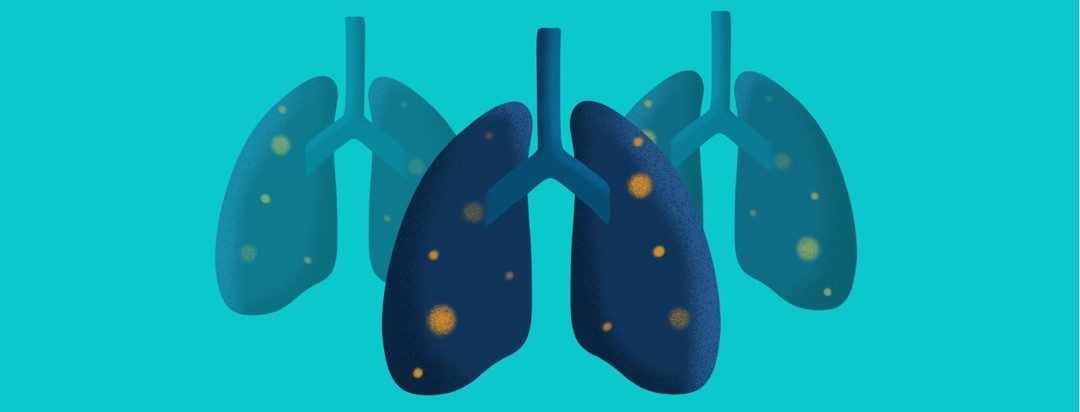Top 5 Things That I Wish People Knew About Lung Cancer
November is Lung Cancer Awareness Month -- you may see this abbreviated as LCAM. Coming right after the aggressive pinkness of Breast Cancer Awareness Month in October, LCAM has gotten much less attention in the past. I challenge everyone who is reading this article to try to change LCAM’s profile this year and spread awareness! A good way to start would be by sharing the following five things that everyone should know about lung cancer.
1) Anyone who has lungs can get lung cancer
Many people do not know this. I did not know this before I was diagnosed in 2013. Both men and women of all ages can be diagnosed with lung cancer; the only requirement is having lungs. We need to end lung cancer stigma and share that numerous factors in addition to smoking can lead to lung cancer, including radon, air pollution, family history, and just plain old bad luck. Lung cancer should be on everyone’s radar and all should know the early warning signs of lung cancer, including cough, wheezing, hoarseness, chest pain, loss of appetite, and fatigue. The public also needs to understand that frequently there are no early warning signs and lung cancer is not diagnosed until it has spread to other parts of the body, revealing itself through bone pain, headaches, dizziness, and other symptoms.
2) Anyone diagnosed with lung cancer needs to get tumor testing
There are more new treatments and trials for lung cancer that have been developed in the past five years than in all of lung cancer’s history and more advances are taking place every day. No one should be told upon diagnosis to just go home and “get their affairs in order,” no matter what stage of lung cancer they have when diagnosed. If that happens, it is critical to get a second opinion. Not all lung cancers are treated the same; it is extremely important to have a tumor biopsy and get biomarker testing (also frequently called mutation or molecular testing) so that your doctor can figure out the best possible treatment. To be eligible for many newer treatments such as targeted therapy and immunotherapy, this biomarker testing is essential.
3) You can have lung cancer, be in active treatment, and “look good”
The old stereotype of an bald, sick-looking elderly person in a wheelchair is not what all lung cancer patients look like! As treatments have improved, so have our qualities of life. Many of us are living our lives along with dealing with lung cancer. We are working, raising our families, traveling, and even advocating for ourselves and others. This does not necessarily mean that we are “cured” however, despite what the general population often thinks. We need to get across that it is possible to live with lung cancer, even treat it somewhat as a chronic disease in some cases. Good treatments are what make this possible and that is why we need more research and new therapies desperately!
4) It gets harder the longer you live with stage IV lung cancer, not easier
In many other cancers, when you are five years or ten years past diagnosis, you are considered “cured.” This is not the case with advanced lung cancer. The longer that many of us live with lung cancer, the more fear we have that current treatments are going to stop working and the fewer options we usually have once they stop working. Most people outside of the lung cancer community do not understand this, however, and believe the longer we live with lung cancer, the less stressful it becomes. This is another misconception that we need to change. In addition to the continued fear and scanxiety, we often deal with increased physical ailments that are side effects of long-term treatments and more spiritual ailments because we see many of our lung cancer friends pass away long before their time.
5) Lung cancer does not get anywhere near enough funding for research
Lung cancer, the number one cancer killer, gets a fraction of the per capita funding that other cancers receive. The Department of Defense (DOD) Lung Cancer Research Program, which is the largest federally funded program for lung cancer, currently has $14 million annually to spend on new research proposals. In comparison, the DOD has $130 million of funding for breast cancer and $100 million for prostate cancer each year. Lung cancer is forced to rely heavily on private funders of lung cancer research such as LUNGevity, GO2 Foundation, LCFA, LCRF, and others in order to accelerate research and new treatments. We are dependent upon research funding for our lives; this, more than anything, needs to change!
Editor’s Note: We are extremely saddened to say that on June 23, 2024, Ivy Elkins passed away. Ivy’s advocacy efforts and writing continue to reach many. She will be deeply missed.

Join the conversation